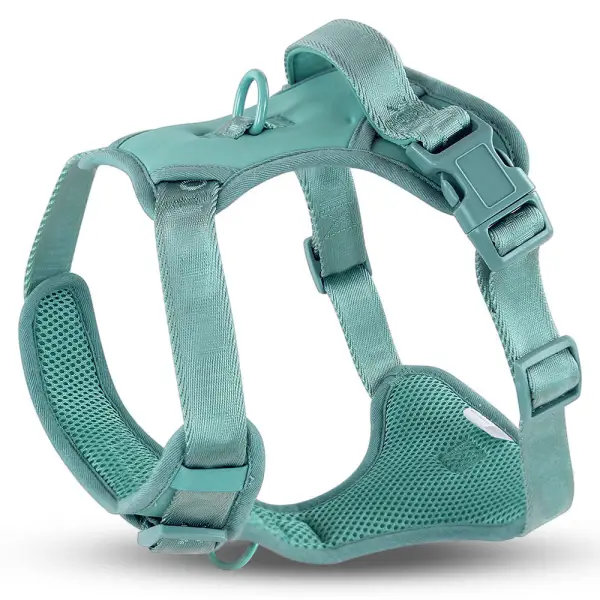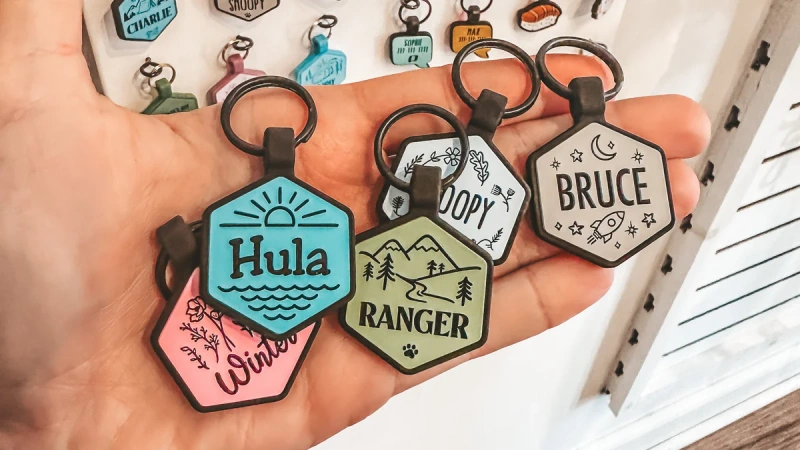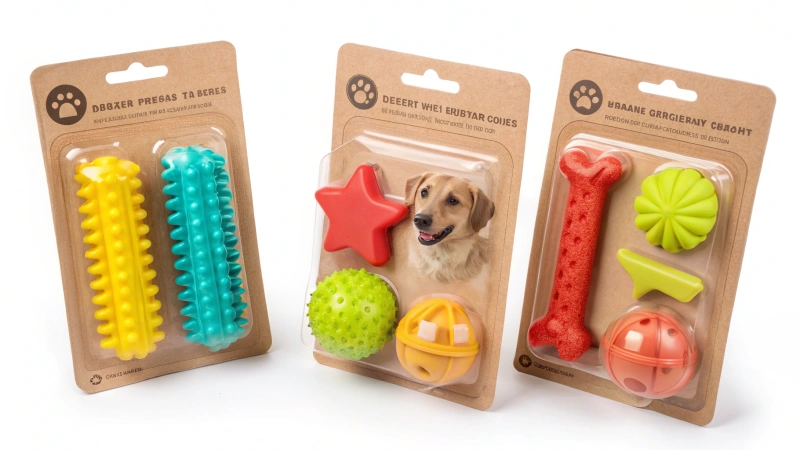No-pull dog harnesses have become increasingly popular among dog owners seeking to manage their pets’ pulling behavior during walks. These innovative devices offer a humane and effective solution to a common problem. Let’s explore how these harnesses function and their benefits for both dogs and their owners.
Mechanism of Action
No-pull harnesses operate on a simple yet ingenious principle:
- Front attachment point: Unlike traditional harnesses or collars, no-pull harnesses feature a leash attachment point on the dog’s chest. This positioning is crucial to their effectiveness.
- Redirection of force: When a dog pulls on the leash, the harness redirects the force sideways instead of allowing forward momentum. This action causes the dog to turn back towards the owner, effectively discouraging pulling behavior.
- Pressure distribution: The harness design distributes pressure evenly across the dog’s chest and shoulders, reducing strain on the neck and throat.
Key Benefits
- Improved control: No-pull harnesses provide better control over dogs, especially larger or more powerful breeds. This enhanced control makes walks more manageable and enjoyable for both the dog and the owner.
- Reduced physical strain: By minimizing pulling, these harnesses reduce the physical strain on the owner’s arms, shoulders, and back. This can prevent discomfort and potential injuries during walks, particularly for owners with mobility issues or when handling strong dogs.
- Enhanced safety: Traditional collars can pose risks of choking or tracheal damage, especially when dogs lunge or pull suddenly. No-pull harnesses significantly reduce these risks by distributing pressure more evenly.
- Positive walking experience: The gentle guidance provided by a no-pull harness fosters a more positive walking experience. This can strengthen the bond between the dog and its owner, making daily walks a pleasurable activity rather than a struggle.
- Encouragement of good behavior: These harnesses promote good walking habits by reinforcing the idea that only a loose leash allows forward movement. This can be rewarding for the dog as they learn to walk calmly beside their owner.
Effectiveness for Different Breeds
No-pull harnesses can be effective for both small and large breeds, but there are some considerations:
- Small dogs: These harnesses are often very effective for smaller breeds. The design easily redirects their forward momentum, and smaller dogs tend to be more sensitive to the pressure and discomfort of pulling against the harness.
- Large dogs: For larger, stronger breeds, no-pull harnesses can still be helpful in managing pulling, but may require more training and consistency. While the harness provides better control than a collar, it won’t completely eliminate pulling without proper training.
Proper Fitting and Usage
To maximize the effectiveness of a no-pull harness, proper fitting is crucial:
- Measure your dog: Start by measuring your dog‘s chest girth at the widest part of their ribcage. Use this measurement to select the correct size harness according to the manufacturer’s sizing chart.
- Choose the right style: No-pull harnesses come in various styles, including over-the-head and step-in designs. Select a style that your dog is comfortable with.
- Adjust before use: Before putting the harness on your dog, adjust the straps to get a rough fit. This helps prevent pinching or discomfort when securing it around your dog.
- Secure properly: Fasten all buckles and ensure the harness is snug but not too tight. A good rule of thumb is to fit two fingers between the harness and your dog’s body.
- Check the fit: The front attachment should be positioned near the center of your dog’s chest, ideally on or just above the chest bone. Ensure that the straps do not rub against your dog’s legs or restrict movement.
- Test during a walk: After fitting, take your dog for a short walk to see how the harness performs. Watch for any signs of discomfort and adjust as necessary.
Expert Opinions

Many veterinarians and trainers recommend no-pull harnesses for their ability to provide better control and reduce the risk of injury. However, experts emphasize that these harnesses should be used in conjunction with positive reinforcement training for the best results.
Some key points from pet experts include:
- Training tool: No-pull harnesses should be viewed as a training aid rather than a complete solution to pulling behavior. They are most effective when used alongside consistent training techniques.
- Safety considerations: Proper fitting is crucial to avoid chafing and discomfort. A poorly fitted harness can lead to irritation or movement issues.
- Long-term use: While many experts support the use of no-pull harnesses, some caution against relying on them indefinitely. There are concerns about potential long-term effects on a dog’s gait and structure, particularly for active breeds.
Frequently Asked Questions
- Can no-pull harnesses be used for both short and long walks?
Yes, these harnesses are suitable for both short and long walks. They provide immediate control for quick outings and can enhance comfort and reinforce training during longer walks. - How long does it take for a dog to adjust to a no-pull harness?
The adjustment period varies depending on the dog. Some may adapt quickly, while others might take a few weeks. Consistent use and positive reinforcement can help speed up the process. - Are no-pull harnesses suitable for puppies?
Yes, but it’s important to choose a harness that fits properly and allows for growth. Introduce the harness gradually and associate it with positive experiences.
In conclusion, no-pull dog harnesses work by redirecting a dog’s pulling force and providing better control for owners. When used correctly and in conjunction with proper training, they can significantly improve the walking experience for both dogs and their owners. While they are not a magic solution, these harnesses offer a valuable tool in managing pulling behavior and promoting better leash manners.





